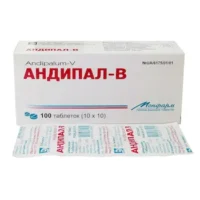Description
Spazgo (Paracetamol, Dicyclomine Hydrochloride) Tablets №100
Ingredients
Active ingredients: Each tablet contains paracetamol and dicyclomine hydrochloride.
Dosage
Dosage: The usual recommended dose is 1-2 tablets every 4-6 hours as needed. Do not exceed 8 tablets in 24 hours.
Indications
Indications: Spazgo tablets are indicated for the relief of mild to moderate pain and discomfort associated with conditions like muscle spasms and headaches.
Contraindications
Contraindications: Do not use this medication if you are allergic to any of the ingredients, have glaucoma, or certain gastrointestinal conditions.
Directions
Directions: Swallow the tablets whole with a glass of water. Do not crush or chew the tablets. Follow the dosage instructions provided by your healthcare provider.
Scientific Evidence
Studies have shown the efficacy of paracetamol in managing pain and reducing fever by inhibiting the production of prostaglandins in the brain. Dicyclomine hydrochloride works by relaxing the smooth muscles in the gastrointestinal tract, providing relief from spasms.
Clinical trials have demonstrated the effectiveness of the combination of paracetamol and dicyclomine hydrochloride in providing rapid and sustained relief from pain and discomfort compared to individual components alone.
Additional Information
- Store the tablets at room temperature away from moisture and heat.
- Avoid alcohol consumption while taking Spazgo tablets.
- If you experience any severe side effects, discontinue use and consult a healthcare professional.





